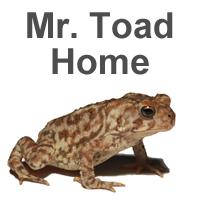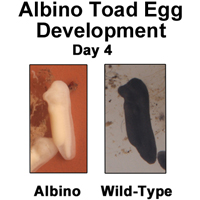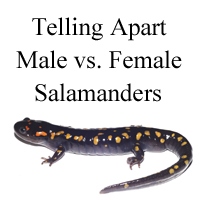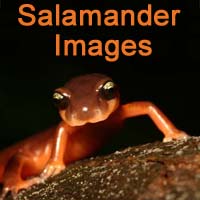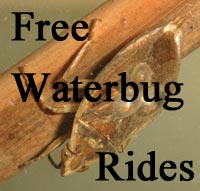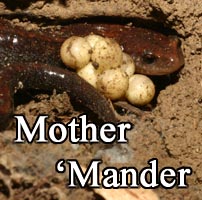Egg to tadpole to metamorphosis |
|||||
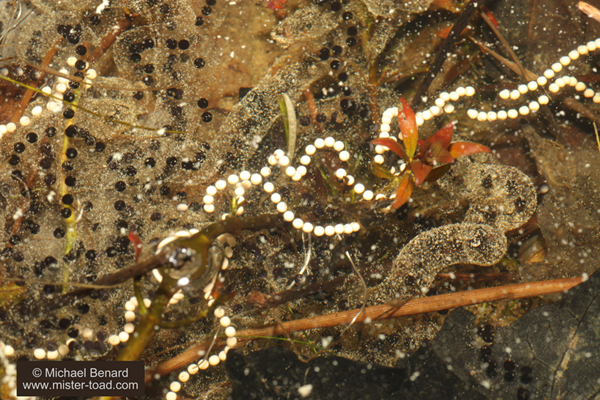
| |||||
|
During the American Toad mating season, female toads will lay long strings of thousands of eggs. The photo shows the normal, black-colored eggs mixed in with white eggs that were probably laid by an albino female toad. |
|||||
|
| |||||
|
Here are the toad eggs on a white background. In the first photo, the round eggs are shown early in development. The second photo shows the eggs two days later, as the developing embryo begins to take on a tadpole-like shape. |
|||||

| |||||
|
Here we see three American Toad tadpoles shortly after hatching. The little feathery gray protuberances on either side of the tadpoles' heads are the gills that they use to absorb oxygen from the water. Like many frog larvae, American Toad tadpoles have tiny external gills for a brief period of time just after they hatch. However, the tiny external gills are quickly covered and become internal gills for the rest of the tadpole's development. This is quite different from the larvae of salamanders like Spring Salamanders or Tiger Salamanders, which keep their external gills until they metamorphose. |
|||||
|
| |||||
|
American toad tadpoles thrive in a wide range of different environments, from shallow pools that dry quickly to large permanent ponds full of fish. Across these different environments the toad tadpoles may interact with a tadpoles of many others species of frog, including Wood Frogs, Gray Treefrogs, Leopard Frogs, Green Frogs and Bullfrogs. |
|||||
|
| |||||
|
After four to six weeks the American Toad tadpoles will metamorphose into tiny, terrestrial toadlets. Tremendous numbers of tiny metamorphosed toads will swarm out of the ponds, seeking insects to eat and safe places to take refuge. Many of the young toads will be eaten by predators like garter snakes or killed by adverse weather conditions like drought. But a few of these youngsters will survive to become adult toads. |
|||||
| |||||
| Tweet |
| ||||||||||||





